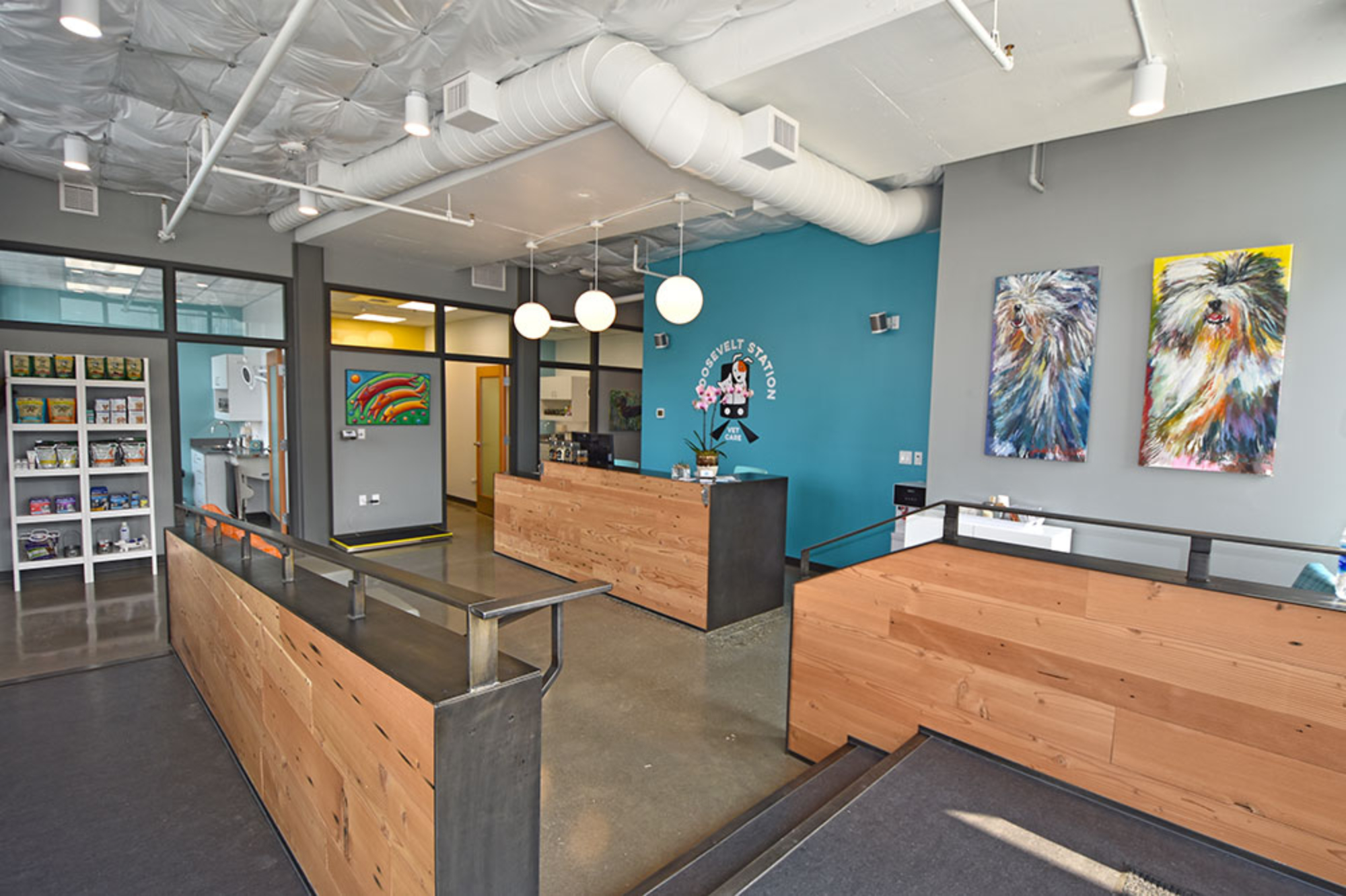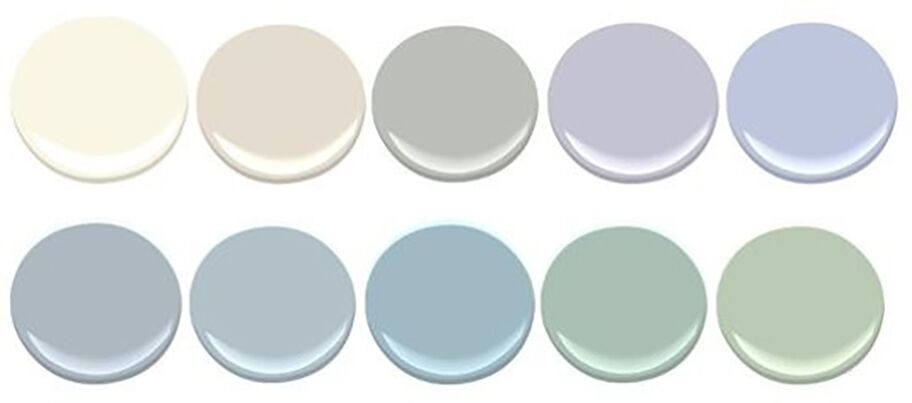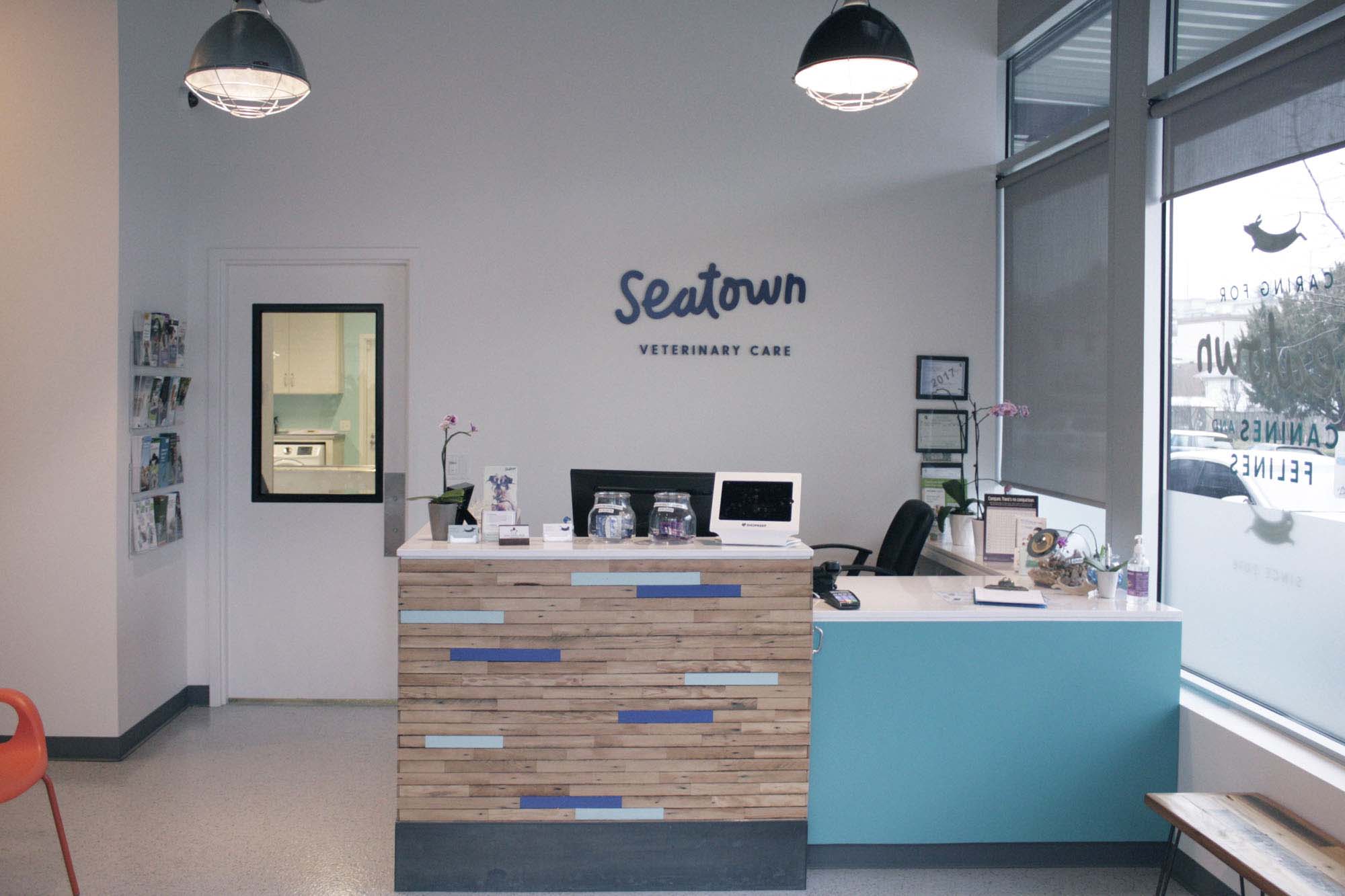
Designing from the eye of the pup:
During my years in school, the combination of Neuroscience and Architecture really interested me. I was fascinated by the research in understanding how different spaces, lighting, and colors can affect one’s emotions or neurological state. As I moved into the professional world, these lessons learned allowed me to achieve different goals such as efficiency or desired emotions in spaces. When I started on my first veterinary clinical experience I thought to myself, what about animal neuroscience and architecture? How do animals perceive space? And in particular, how can I design a veterinary clinic that lowers stress levels and fear from our furry loved ones? Turns out there is a fairly new, but rapidly growing study called “Fear Free Design”.
According to “What Is the Fear Free Concept in Veterinary Medicine?” Fear Free was started by Dr. Marty Becker who devoted his life to this study. He has written numerous books, serves on advisory boards, and teaches at multiple veterinary colleges.
Fear Free expands beyond the design realm down to the smallest details of what could be triggers for animals such as the clothing that doctors and technicians wear. White lab coats appear to be white glowing scary beacons to animals in distress. Even background music has an impact. There are specific playlists of classical music meant to create a calming atmosphere for visiting pets. For the purpose of this article, I will be focusing on architectural design elements that help alleviate stress in pets.
Paint Colors:
The world and colors we see differs drastically from that of our pets. It’s a common misconception that dogs are colorblind. In reality, dogs have dichromatic vision and can see most of the range of colors humans can see. According to “What Is the Fear Free Concept in Veterinary Medicine?” they can’t distinguish colors in the 510 to 590 nanometers, or wavelengths, the range between green to orange. Other key functions in canine vision include seeing better in low light than humans can, and being able to see into the ultraviolet UVB spectrum.
In “Fear-Free: What You See Is Not What the Cat or Dog Gets.” Heather Lewis, AIA, of Animal Arts in Boulder, Colorado, has been developing lighting and color guidelines as part of a larger document to create low-stress hospital environments. Here’s a sneak peek of her palette:

Not the most invigorating, I know. But with the use of this palette a clinic can drastically reduce the stress on an animal’s experience. The way we’ve been approaching this at our firm is using these light, muted blues and greens in exam rooms where animals tend to be the most stressed. Then using brighter more joyful colors in areas mainly staff populates such as break rooms or offices.

Fear Free Lighting:
Studies from Doctor Lewis have shown that day lighting provides the same healing benefits to animals that it does to humans. Day lighting can be achieved through a variety of ways. In the last couple vet clinics Hinge has designed we have implemented skylights, solar tubes, and clerestory windows into treatment and exam room spaces to help the neuro health of both the doctor and furry patient.
When natural light is unavailable artificial lighting should be dimmable. When full lighting levels are not necessary, dim the lights to avoid stressing out the animal. Fluorescent lights should also be removed. Animals can hear sounds much beyond the human ear spectrum and the buzz from fluorescent lights can be bothersome, especially to an already stressed animal.
Waiting Areas:
When approaching the layout of the waiting room area, we focus on two things: shorter wait times and separation of species. The mixture of dogs, cats, and other animals can increase the pet’s anxiety before they even reach the exam room. While separating them is good, visual barriers that block the animals from seeing each other is better.
Shorter wait times decrease the chances an animal will become stressed when faced with strange people, pets, and places. Some practices are asking clients to call from their car when they arrive, and some are even introducing exam rooms with doors to the exterior. With doing this less, square footage can be used in waiting areas and given to exam and treatment areas.
Other Fear Free Features:
Consider alternatives to lifting animals up onto high exam tables with cold, slippery metal surfaces. Some clinics use yoga mats for animal exams.
A fear free vet might also use sedatives or pheromones — chemicals secreted by animals that serve as stimulants for many things, including mating — rather than muzzles or restraints to keep animals calm during treatment, Becker said.
It’s important that enclosures used for overnight stays are designed to reduce fear and anxiety. Dog enclosures should be laid out so that they are not looking at each other, provide a view outside the dog’s enclosure at dogs-eye level and allow for a temporary barrier to be put up in the case of an extremely anxious dog.
Fear Free Design enclosures for cats should allow normal feline behaviors. Preferably, cat enclosures should be 36 inches long and not reflective. Avoid adding 3rd row of cages that force an animal to be lifted overhead, this is safer for staff and more pleasant for the animal. Cat’s also do not like to be placed in cages sitting directly on the floor. In our latest vet clinics we have been building up a 1’ base for the lower cages to sit on and utilizing that space for storage of food, litter or blankets.
Conclusion:
Fear free design is a relatively new field of study but can start being applied to any vet clinic, new or old. The goal is to reduce stress as it has negative effects on pets, owners, and the veterinary team. This stress can result in decreased wellness of the doctors, and ability to appropriately examine and treat an animal along with slower recovery from disease and injury.
Implementing all of these design elements can be challenging, but even using just a few features can drastically help lower pet stress which results in happier clients and doctors.
“Fear Free Design” is a new concept in veterinary medicine which aims to recognize and reduce fear, anxiety, and stress associated with visits to the veterinary hospital. Achieving this takes effort and requires active communication between the owner and the veterinary team, but the reward is a better experience and less stress for all involved — the pet, owner, and veterinary team.”
-Jessica Hamilton Seid, DVM
Sources:
Seid, Jessica H. “What Is the Fear Free Concept in Veterinary Medicine? • MSPCA-Angell.” MSPCA, www.mspca.org/angell_services/fear-free-concept/.
Lewis, Heather E. “Fear-Free: What You See Is Not What the Cat or Dog Gets.” DVM 360, www.dvm360.com/view/fear-free-what-you-see-not-what-cat-or-dog-gets.
Lewis, Heather E. “Building a Fear Free Practice.” DVM 360, 24 Jan. 2019, www.dvm360.com/view/building-fear-free-practice.
